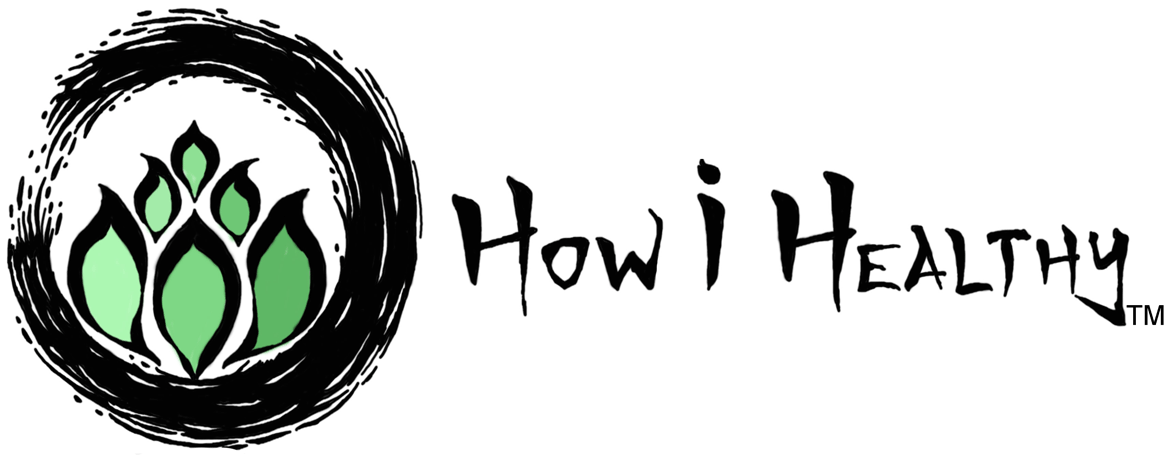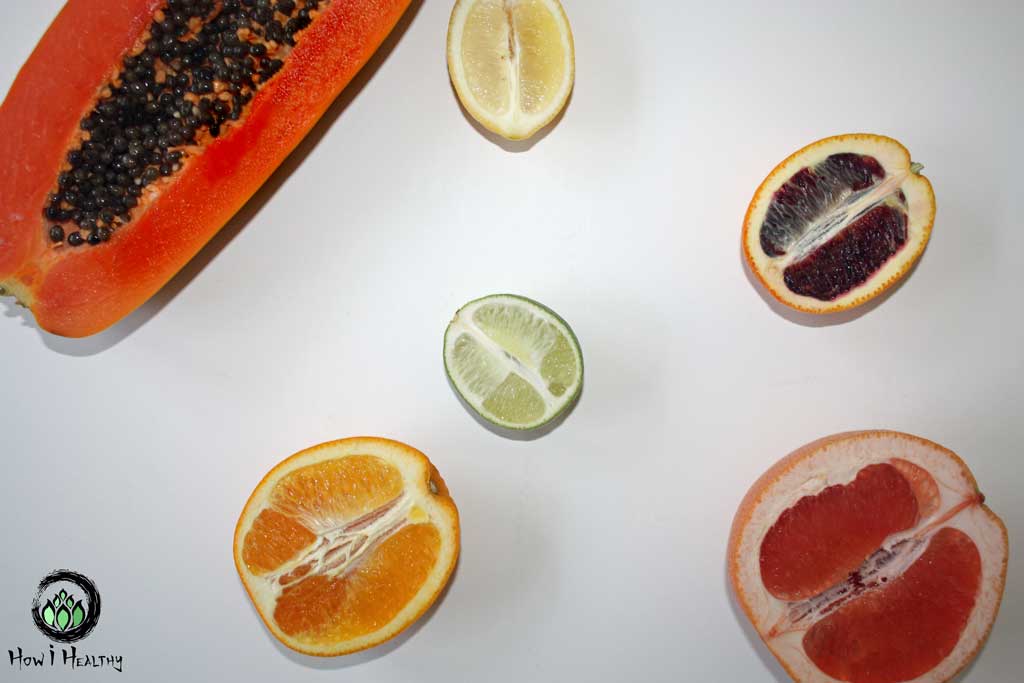In This Article, We'll Cover:
- Greenwashing Basics
- Greenwashing in the Sex Toy Industry
- What Greenwashed Sex Toys Look Like & Claim
- 8 Ways to Avoid Sex Toy Greenwashing
- How i Healthy’s Favorite Ethical & Sustainable Sex Toy Brands
If you’ve read the original Greenwashing Guide then you know I don’t like companies who market their products as more sustainable/ethical/eco-friendly than they actually are.
That’s greenwashing.
And the sex toy industry is no different.
There’s rampant sex toy greenwashing.
Why?
Because consumers are demanding sustainable and socially responsible products. 66% of consumers are willing to pay premium prices for these products. (45)
That’s an opportunity for exploitation. And companies do.
And greenwashing is getting worse. I’m looking at you, “compostable” & “recyclable” bioplastic vibrators. No, thank you.
Greenwashing is harmful because it:
- Devalues environmentally & socially responsible companies & products that actually are socially/environmentally engaged.
- Enables misinformation and confusion.
- Raises consumer skepticism about sustainable solutions and effectiveness.
(45)
Greenwashing 101
First, let’s cover the greenwashing basics.
“Greenwashing” means advertising a product as more environmentally conscious then it actually is. (20)
In 1986, Jay Westervelt, an environmentalist, first used “greenwashing” in an essay published about the hospitality industry. (45)
Today, greenwashing can be used for products or services, and business organization/operations/standards/practices.
Greenwashing Basics
Here’s some forms greenwashing takes:
- False Hopes: Claiming something offers a solution when it doesn’t.
- False Labels: Certification-like images that mean nothing. Like “All Natural” (14).
- Fearmongering: Manipulating and arousing consumer fears. Often to promote a “solution” or product that can quell them.
- Forged Labels: Real certification marks that are forged. “UL-certified” is a major one (46).
- Irrelevant Claims: An example, CertiPUR-US® certified mattresses have no “pBDEs, TDCPP, and TCEP”. But the EPA already bans these. So, the claim is irrelevant. (47, 48, 49)
- Misdirection: Highlighting one attribute to hide/excuse another.
- No proof: A company makes a claim and provide to way to verify it.
- Vague words: “Eco-friendly” and “green” lack specifics and ask more questions than answer.
- Profits over People and the Environment.
(45)
Let’s get into some practical examples.
On lube packaing (we’ll get into sex toys later), you might see phrases like:
“All Natural”*
“Chemical Free’”
“Fragrance Free”
“Cruelty Free’”
“Nontoxic”
“Green”
These are not verifiable through the USDA National Agricultural Library of Certification Program Listings, or the USDA Food Safety and Inspection Service Meat and Poultry Labeling Terms. (13, 14, 15)
* In the list above, “All Natural” is an outlier.
“Natural” is listed on the USDA Food Safety and Inspection Service Meat and Poultry Labeling Terms. As long as a product is not “fundamentally altered”, it can be “All Natural”.
The phrase “fundamentally altered” is vague. It gives a lot of wiggle room for things like high fructose corn syrup, natural flavors, and maltodextrin. (14, 15, 16, 17, 18, 19)
Those aren’t so great.
Sex Toy Greenwashing: Claims & Tactics
Now, let’s shift focus to sex toys.
Awareness for Non-Toxic Sex Toy Materials has come a long way.
I’ll do a quick recap about non-toxic toys and then dive deeper.
“Body-Safe”, the “All Natural” of Sex Toys
“Body-Safe” is a phrase used often in the sex toy industry. It implies the sex toy materials will not harm the body.
While this phrase has good intentions, there is no independent third-party certification verifying the claim. (21, 22)
“Body-Safe” is the “all natural” of sex toys.
“Body-Safe” is not a regulatory agency, nonprofit, registered trademark, or even a company with a website.
A program to test, verify, and certify non-toxic sexual products was proposed by The National Association for the Advancement of Science and Art in Sexuality (NAASAS). But it doesn’t exist yet. (22)
Till then, there’s the NAASAS Safe Sexual Products Campaign. Companies can join and pledge to follow safer standards. (22)
And, the Coalition Against Toxic Toys (CATT) has a list of manufacturers, distributors, and retailers dedicated to non-toxic toys (24). (It’s one of How i Healthy’s Goals to join this list!)
So, while “body-safe” can be an empty promise, it’s what we got to work with.
Bioplastic & “Compostable” is Misleading
Okay, so “body-safe” doesn’t exactly scream GREENWASHING! It’s more focused on sex toy materials as they relate to our bodies, not the Earth.
Now Enter: Bioplastic!
Such good intentions. But, when science and reality weight in, bioplastic isn’t what companies claim it to be. And I loathe it.
What is bioplastic?
A material made from plants (often corn, sugarcane, or starch) instead of petroleum/fossil fuels. (12, 13)
Not petroleum-based? That’s great! Right?
Well, bioplastics vary:
- Some are biodegradable. Some are not.
- Some are compostable under certain conditions. Some are not.
- Some are recyclable in the proper facilities. Some are not.
- Some can be engineered to last as long as petroleum plastic.
- Some are a “mixed plastic” and still contain petroleum-based plastics.
(12)
See a pattern? bioplastic isn’t just one thing or material. There are many kinds of bioplastic. And that complicates things.
Bioplastic variety means disposal/end-of-life protocols are different for each type of bioplastic. And these protocols are often not clear to consumers.
Here’s some common consumer misconceptions:
1. “Compostable” means “Home Compostable”
False!
Compostable bioplastics require industrial composting facilities to breakdown. These facilities are rare. Composting bioplastic is unrealistic for most of the world. (3, 4, 6, 8, 10, 12, 13)
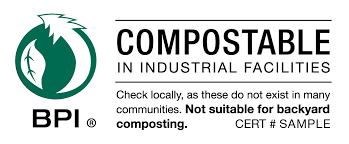
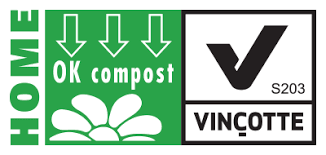
Look at these “compostable” marks. They mean very different things.
“Home Compost” means something can compost in your backyard. Without this mark that “compostable” probably needs an industrial facility.
The mark on left even says (in smaller print I’ll add) “In Industrial Facilities…Check locally, as these do not exist in many communities”.
And guess which mark that “compostable” vibrator has.
2. “Recyclable Bioplastic means all recycling facilities can recycle it”
Again, no.
Recyclable bioplastic requires specialized recycling technology.
And, yup you guessed it: Most recycling centers do not have this recycling technology. (3, 4)
3. “Compostable bioplastics are recyclable”
Also false!
Putting compostable bioplastics in recycling can contaminate the recycling stream of petroleum-based plastics. That means compostable bioplastics can ruin entire batches of petroleum-based plastic recycling. (12, 13)
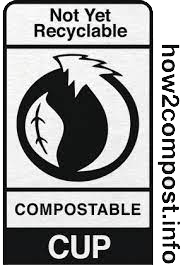
4. “Bioplastic is a greener, more sustainable choice.”
The world lacks the facilities, infrastructure, and regulations to process end-of-life bioplastics. There’s a risk we’ll just have a bioplastic problem on top of the existing plastic problem. (4, 7, 8, 11, 13)
But wait! There’s more bioplastics fine print:
- Bioplastics need similar amounts of energy as petroleum-plastic to produce.
- Bioplastics need water, land, pesticides, and herbicides for crop cultivation.
- Bioplastics in the ocean still harm marine life like petroleum-based plastic.
- Scientists haven’t determined the full environmental and social impacts of bioplastics.
(3, 4, 6, 7, 9, 11)
Bioplastics sound a lot like regular plastic, eh?
So what do we do with it?
Chuck it in the garbage. Yup.
Doing this prevents contaminating recycling streams. That’s the best we can do until there are more facilities to process bioplastic.
So, bioplastic might reduce fossil fuels dependency, but isn’t a perfect solution.
And it’s far from a ‘greener’ or more sustainable choice.
But here’s the big issue:
Most folks know that plastic isn’t great.
But, people often think that bioplastic is.
(10)
That’s why bioplastic sex toys are one of the more dangerous sex toy greenwashing tactics.
People think that bioplastic vibrator is “eco-friendly”.
But in reality, that bioplastic vibrator is only perpetuating detrimental environmental impacts.
“Make You Sex Life Sustainable!”… Ug.
In recent years, “biodegradable”, “compostable”, and “bioplastic” vibrators have hit the market.
I’ve seen the cringe-worthy sex toy greenwashing statements:
- “Make your sex life sustainable!”
- “Green sex toys!”
- “Organic orgasms!”
Ug. No. That’s not how that works.
But it does make money.
Swap out a plastic sex toy cover with bioplastic, add some marketing genius, and boom! Consumers think a $100+ vibrator is good for the Earth.
Here’s an example:
I’ve seen a bioplastic sex toy marketed as “100% recyclable” & “100% biodegradable”. Sounds good.
But read the fine print.
Because it’s listed in the sex toy manual:
“Biolene bioplastic is “100% recyclable, but needs special recycling facilities that are not yet commonplace. Disposing of bioplastics through house hold waste is therefore the best and most environmentally friendly solution (5)”.
(Household waste? That’s the garbage bin. But wait! There’s more!)
“Even though Biolene is 100% biodegradable it is not allowed to be disposed of in the biowaste bin or compost heap. Components made from Biolene can only be disposed of through household waste (5)”.
So…no recycling or compost? Sound familiar? That’s bioplastic for ya!
Unless you live near one of the few bioplastic facilities (recycling and/or composting), that vibrator is going in the trash.
$100+ dollars and it’s still going to a landfill?! No. Thank you.
Talk about misleading and greenwashed marketing!
Maybe bioplastic is the future.
But, without the policy, infrastructure, accessibility, and consumer education to catch up to bioplastic innovation, it’s a money-making land-filler and sex toy greenwashing at best.
Deceptive “Green” Marketing
Here’s another sex toy greenwashing marketing scheme that irks me:
Toys shaped like plants, leaves, sprouts, and/or are the color green. Folks see green or plants and think “eco-friendly!”
Heck, even How i Healthy uses green for a reason.
Manufacturers, companies, and marketers use the color green to both overtly and covertly say “eco-friendly”.
This is called executional greenwashing. (45)
But just because something is green or looks like a plant doesn’t mean it’s environmentally superior to other toys. But it’ll claim to be. (45)
And probably be more expensive.
1,3-Proanediol Found in "All Natural" Lube
Now here is some sneaky greenwashing.
The Sustainable & Ethical Lube Guide goes into more details about the bad chemicals found in lube.
But 1,3-Proanediol gets a special shout out as a greenwashed chemical to avoid.
In a nutshell, some lubes have chemicals that pull water away from vaginal or anal tissue, drying it out. That’s the opposite of what lube should do. (53, 54, 55)
Glycerin and propylene glycol are the most well-known offenders.
And many lubes advertise “glycerin and propylene glycol-free”. Instead, these lubes opt for the “all natural” alternative: 1,3-Proanediol.
1,3-Proanediol is derived from corn sugar or palm oil instead of petrochemicals (like propylene glycol is). 1,3-Proanediol can even be certified organic! (56)
But 1,3-Proanediol behaves very similarly to propylene glycol.
That means it can dry draw moisture from tissue. 1,3-Proanediol had similar water-drawing properties (osmolality) as lubes made with propylene glycol, glycerin, and PEG. (52)
So, don’t be fooled by the “derived from plants!” or “certified organic Propanediol!” lube.
Just because something is made from plants, doesn’t mean it should go in our bodies.
Plastic-Free Packing: A Misdirection Tactic
I’m the first person to get behind plastic-free packaging.
But not at the expense of people or planet.
And, unfortunately, plastic-free packaging is often misdirection. An attempt to cover up less sustainable aspects. Especially for sex toys.
Usually, plastic-free packaging is hiding unethical supply chains.
There’s bioplastic, green-colored, and even recycled aluminum sex toys with plastic-free packaging out there. These toys often come in cute little plant-based bags.
Yay, 100% organic cotton sex toy bags!
Not so fast.
Where was that sex toy made? If country of origin isn’t front and center that’s a red flag.
Companies who make their toys in Canada, the EU, Germany, USA, or the UK (like My Favorite Brands do) say it proudly.
Country of origin is a selling point.
Why? Because products made in these countries meet strict worker, product, and environmental standards.
But companies who don’t say country of origin? Or make you dig around on a website for hours? (like I do).
We’ll, that’s probably because the toy was manufactured in a country lacking meaningful environmental and worker protections/regulations. And that manufacturer doesn’t want us to know. (5, 51)
And surprise, most bioplastics are made in countries lacking meaningful environmental and worker protections too! (50)
But, to gloss over this unethical manufacturing, sex toy companies wrap toys in pretty sustainable packaging or organic cotton bags.
Look!
Plastic-free packaging!
With a side of questionable supply chains and forced labor!
Yay!
While plastic-free is good, it shouldn’t justify human or environmental abuse.
I’d rather buy a vibrator made from German silicone, in a German factory, with German environmental laws, shipped in plastic-free German-made packaging (I’m talking about Fun Factory!).
I’d choose German-made silicone Fun Factory toys over mystery-made bioplastic or aluminum vibrators any day.
Counterfeits: Another Issue
I can’t talk about anything without mentioning counterfeits. It’s a huge unseen problem.
Sex toys are no exception to counterfeits. And, it’s only getting worse. Sounds a lot like the greenwashing problem, ya?
The increase in counterfeit sex toys concerns Peter Phinney, founder of Porn Guardian, an anti-porn piracy organization. Porn Guardian even established a new division to locate fakes and report them. (25)
Manufacturers of products, like Magic Wand®, a heavily counterfeited product, even have a dedicated page on their website on how to spot a fake. (26)
This The Counterfeit Guide details out how to better avoid counterfeit products, and shopping through an Ethical Sex Toy Shop helps too.
How to Spot Sex Toy Greenwashing
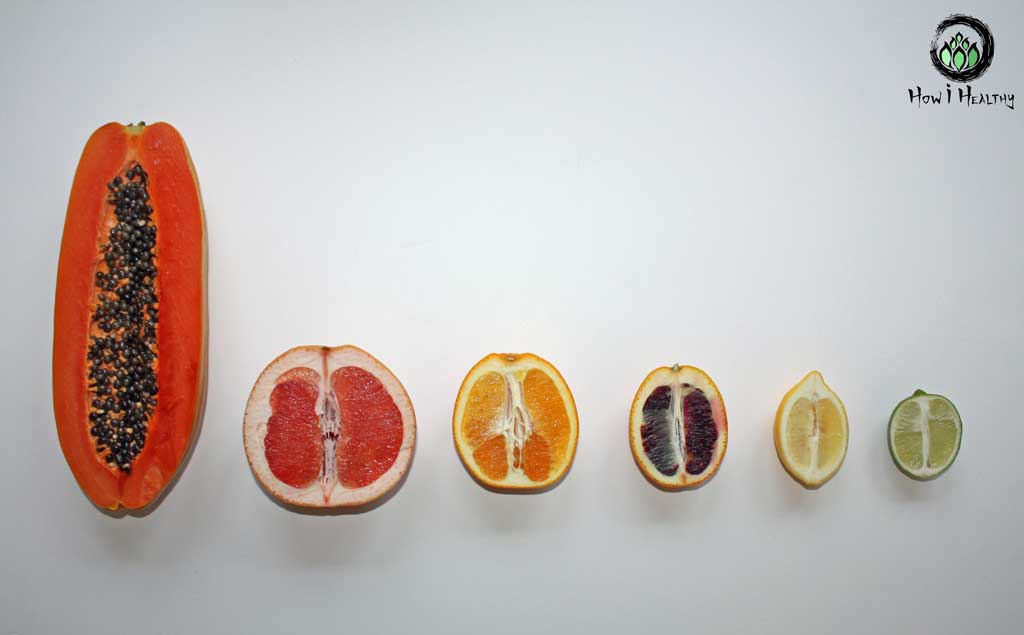
Now that we’ve stated the problems with sex toy greenwashing. Here’s what we can do about it.
Third-party certification marks. Without them it’s hard to verify product claims.
What are ‘Marks’ and What Do They Mean?
So what “marks” look for?
There are hundreds of certifications with unique “marks”.
“Marks” is the legal term for the certification logo/seal/emblems. (69)
Here’s some marks you might find while shopping for sex times stuff:
B Corporation®
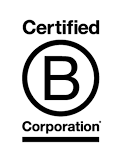
B Corporation® verified by B Lab. B Lab is a nonprofit organization. This mark means a business commits to positively affecting its employees, the local community, and the environment. (29, 30)
B Corporation® describes itself as a business model that “balances purpose and profit.” Over 500 B Corporation® companies are committed to net zero emissions by 2030. (29, 30)
Product/Companies I Love With This Mark:
- Good Clean Love® for USA-made water-based lube.
- Enby a sex shop currently pending certification.
- Glyde® for Fair Trade natural rubber latex condoms.
Biobased Products
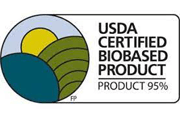
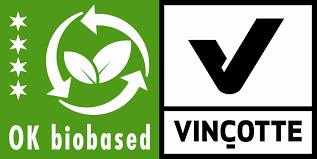
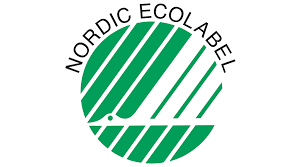
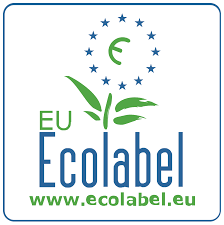
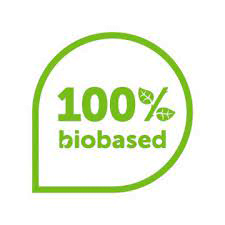


A biobased product is one made with non-petroleum materials. Percentages of non-petroleum material depend on the mark. Some marks state the percentage, but this is not required.
There are many different marks certifying biobased products. Each meet EU, USA, or other standards.
Biobased is typically for nonfood items like detergents, lubricates, inks, fertilizers, and bioplastics.
(31, 32, 33)
Product/Companies I Love With This Mark:
- Haven’t found any biobased/bioplastic toys I’d recommend. They exist, but until those toys are manufactured in countries with meaningful environmental & worker protections, I’m staying clear. Plus, the world needs more recycling/composting facilities to make biobased products a “greener” choice.
- To me, bioplastic toys scream sex toy greenwashing.
Compostable
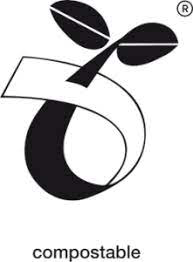



We’ve tackled this a bit already.
Products with these marks can decompose/breakdown under special conditions. Often through heat, humidity, water, and/or microorganisms. (10, 13)
When these conditions are not met, compostable products don’t breakdown. The result is waste that contributes to marine pollution and greenhouse gas emissions. (10, 13)
The big take away for compostable is:
- “Compostable” isn’t the same as home compostable. We can’t just chuck it in the backyard. (4, 8, 10, 12)
- As of this writing, there is no North American certification for home composability. (13)
- And things that are compostable typically should not be put in recycling. This can contaminate the recycling system & stream if mixed with petroleum-based plastics. (12)
- Best practices: Knowing what facilities/programs your municipality or community has. These dictate where to put your compostable products.
Product/Companies I Love With This Mark:
- Haven’t found any compostable toys I’d recommend. They exist. But until those toys are manufactured in countries with meaningful environmental & worker protections, I’m not buying them. Plus, I need a local industrial compost facility to compost it. So, if I see “compostable” sex toy, I think: greenwashing.
- Good Clean Love® lube is packaged in a home compostable corn-based tube.
Cruelty Free


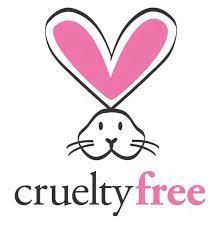
These marks mean no animal testing was used in developing the product.
Leaping Bunny® requires regular independent audits. PETA’s Cruelty Free® does not audit companies to ensure standards. (34, 35, 36)
Product/Companies I Love With This Mark:
- Glyde® for condoms.
Green America®
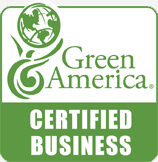
Green America® certifies businesses committed to social justice, environmental sustainability, alternative energy, and fair labor practices. (37)
It’s one of How i Healthy’s Goals to be a Green America® certified business!
Product/Companies I Love With This Mark:
- As You Like It Sex Toy Shop.
- Good Clean Love® for water-based lubes.
- Glyde® for condoms.
International Aloe Science Council (IASC)
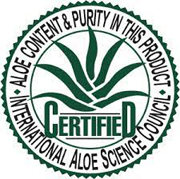
The IASC is a nonprofit trade organization that audits aloe vera products and sets standards of cultivation, and production.
Aloe vera growers, processors, and manufacturers can apply for certification. The IASC mark on a product means the aloe vera content is not only accurate, but meets quality, quantity, and purity standards (38).
With the Fake “Aloe Products” out there, this mark is the best to way to ensure that ‘aloe product’ is actually aloe vera.
Product/Companies I Love With This Mark:
- Aloe based: Sliquid® Organics Natural
- Aloe based but thicker: Sliquid® Organics Natural Gel
- Aloe based with peppermint: Sliquid® Organics Sensation
- Aloe based with moisturizing seaweed: Sliquid® Organics Oceanics
Made Safe®
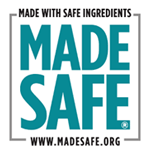
Products with this mark passed testing to ensure that nearly 100 contaminates are not present.
Contaminates like heavy metals, neurotoxins, VOCs, reproductive toxins, carcinogens, flame retardants, endocrine disruptors, behavioral toxins, toxic solvents, or high-risk pesticides. (39)
Product/Companies I Love With This Mark:
- BioGenesis™ Fertility Lube by Good Clean Love®.
- BioNude™ Ultra Sensitive Lube by Good Clean Love®.
Organic
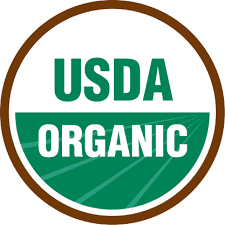
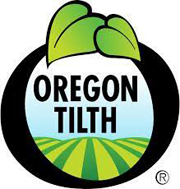
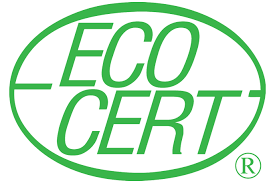
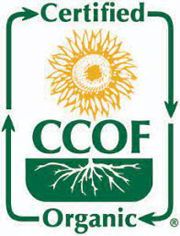
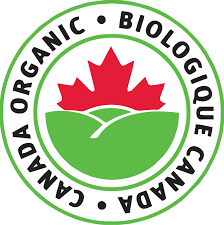
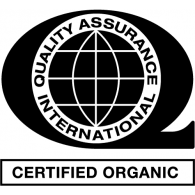
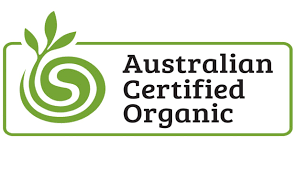


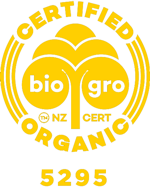
There are many organic certifications across the world. Some are independent third parties and others are government based. (40)
In general, these marks certify that GMO seeds and synthetic chemicals, like fertilizer and herbicide, were not used in cultivation or production. (40)
Product/Companies I Love With This Mark:
Vegan
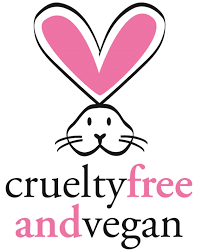
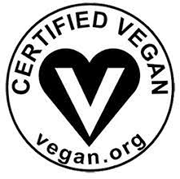

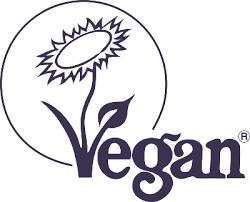
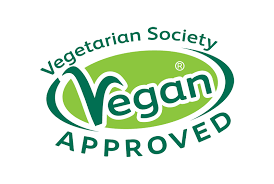
You can find vegan marks on almost anything, not just food. To qualify, products must not involve animal testing or contain any animal-derived ingredients, GMOs, or genes. (41, 42, 43)
Product/Companies I Love With This Mark:
- Glyde® condoms
Go Beyond Certifications
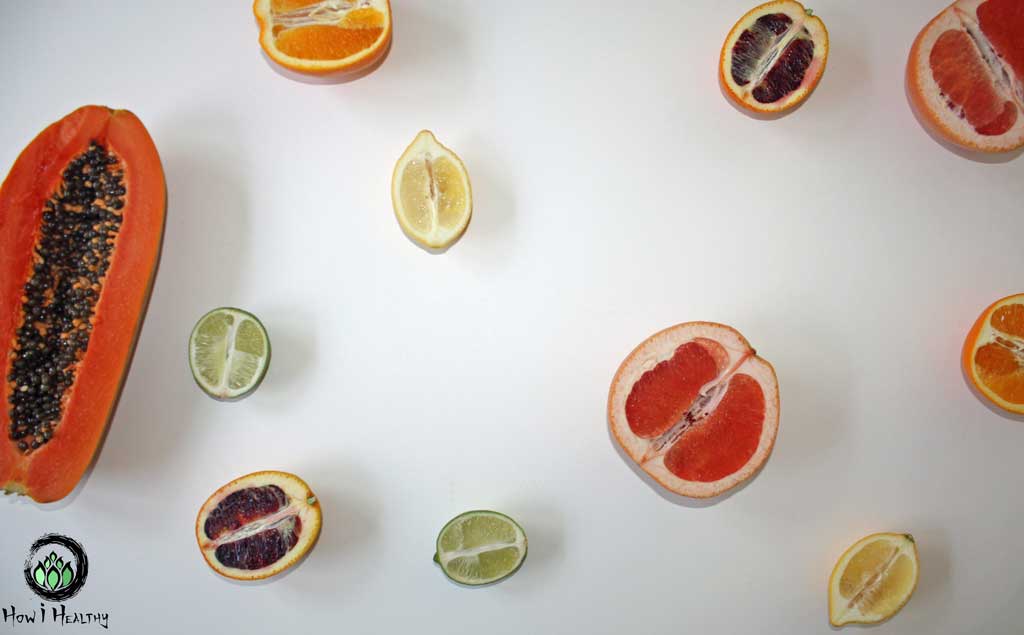
Here’s the thing:
Lubes, condoms, and some sex shops can have third-party marks.
Sex toys and sex toy manufactures often don’t.
But there are greener (but not greenwashed!) options out there! Just see Sustainable & Ethical Sex Shops & Brands.
That list had to pass the How i Healthy Standard as closely as possible:

The How i Healthy Standard
Our favorite products/brands meet as many of these conditions as possible.
Healthy body, healthy planet, & healthy sex means:
- Align with My Best Sustainability & Ethical Tips
- As Local as Possible
- Cruelty-Free
- Doesn’t Contain these Harmful Chemicals
- Environmental and/or Socially Responsible Company
- Ethically Made: Fair Trade, Living Wages, Safe Worker Conditions
- Gender-inclusive
- No Greenwashing Scams
- Organic & Sustainably Harvested Ingredients
- Pass How i Healthy’s Counterfeit Vetting Process
- Purchased Through/From an Ethical Shop/Marketplace.
- Zero Waste / Plastic & Bioplastic-free / Home Compostable
- 1% for the Planet®, B Corporation®, Green American Business®, or similar credentials
Next, apply this standard to the sex toy industry.
Sex Toy Manufacturer: Sustainability & Ethical Standards
Sex toy manufactures can empower communities and ensure worker & environmental protections. Even without a third-party mark by:
- Empowering communities through donations to nonprofits or charitable organizations.
- Gender-inclusive shopping. None of that “For men, for woman” nonsense.
- Have an environmental statement.
- Inclusive to all sexualities, genders, and bodies.
- Listed on the NAASAS Safe Sexual Products Campaign Business Directory or Coalition Against Toxic Toys (CATT) Coalition Partners list.
- Manufacture products in the USA, Canada, UK, Australia, EU, or other country with meaningful worker & environmental protections. No outsourcing to countries lacking fair/ethical labor standards.
- Offer educational resources, workshops, gender affirmation, and disability friendly products or consultations.
- Uses minimal plastic packaging.
Manufacturer values like these can make a bigger impact than that not-so-compostable-bioplastic vibrator.
My Favorite Sex Toys
In my Sustainable & Ethical Sex Shops & Brands I meticulously pulled apart: company social & environmental claims/commitments, supply chain information, sex toy manuals, academic literature, counterfeit risks, and sex toy materials science.
It took hours…okay, many hours…of research, “fine print” reading, website dissecting, greenwash-busting, & sex toy testing to curate this sustainable & ethical sexy times list.
This list is organized by country, so you can keep your purchase as local as possible.
Here the quick version of my life’s work:
My Favorite Sustainable & Ethical Sexy Time Brands
Made In America:
Made In Australia:
Made In Canada:
Made In France:
Made In Germany:
Made In Italy:
Made In Malaysia:
Made In New Zealand:
Made In The Netherlands:
Made In The United Kingdom:
The Takeaway Message
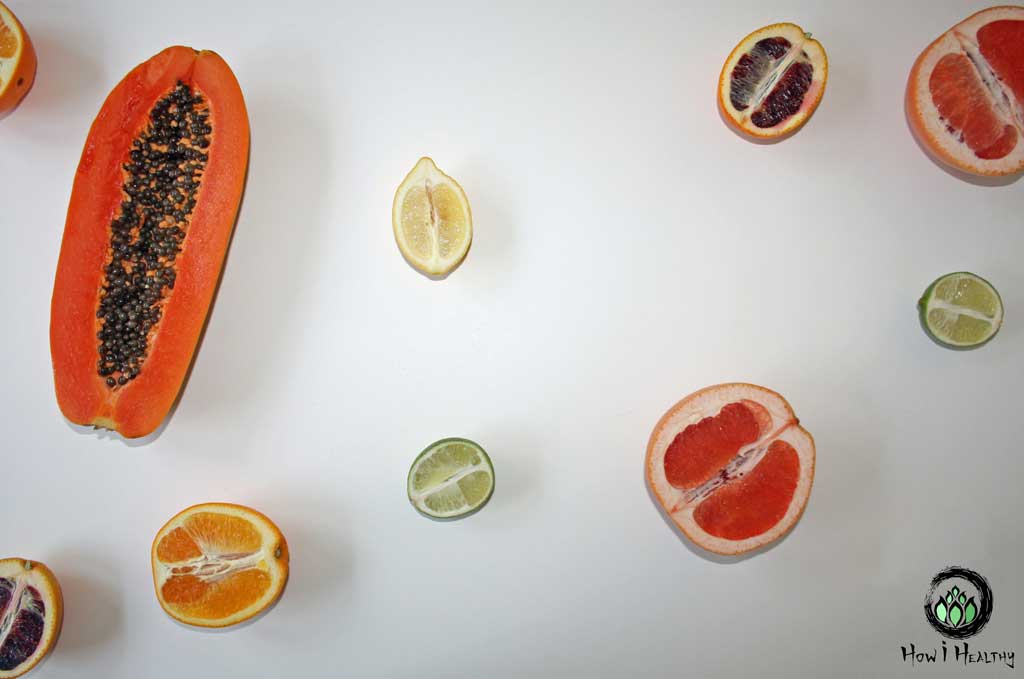
Folks are willing to pay premium prices for environmentally & socially responsible products. (45)
While those are encouraging consumer trends, this opens the door for exploitation.
Greenwashing, or marketing a product as more “eco-friendly” than it is, is on the rise. (45)
And sex toys are no exception.
Sex toy greenwashing looks like:
- “Biodegradable”, “Bioplastic” & “Compostable” vibrators need special facilities for end-of-life processing. Spoilers: most consumers don’t have access to them. So, it’s likely that toy is going in the landfill or ocean. (3, 4, 5, 6, 8, 10, 12, 13)
- “Body-Safe” is the “All Natural” of sex toys. There are no third-party certifications verifying these claims. Anyone can slap it on packaging. (21,22)
- Few third-party certifications are verifying environmental & social claims.
- Most sex toys (currently all “eco-friendly” bioplastic toys) are made in countries lacking meaningful worker & environmental protections. (50, 51)
- “All Natural” and “Plant-Derived” 1,3-Proanediol in lube can draw water from vaginal and anal tissue, drying it out. That’s not what I want my lube to do. (52)
Swap a plastic sex toy cover with bioplastic, add some marketing genius, & boom!
Consumers think a $100+ vibrator is good for the Earth.
What can we do about sex toy greenwashing?
- Avoid the “compostable”, “bioplastic”, and “recyclable” toys unless you live near a facility that can process it at end-of-life. (Otherwise, it’s going in the garbage and isn’t worth the “eco-friendly” upcharge.)
- Choose “made-in” the USA, Canada, UK, Australia, EU, or other country with meaningful worker & environmental protections.
- If a sex toy doesn’t clearly state where it was made, assume the worse: In a country with lacking environmental protections and forced labor.
- Choose products that have third-party marks.
- Choose products listed on the NAASAS Safe Sexual Products Campaign or Coalition Against Toxic Toys (CATT) list.
- Shop from companies that are socially & environmentally engaged.
- Spot greenwashing buzzwords and “eco-friendly” claims.
- Use this guide as a shopping reference.
This list of Sustainable & Ethical Adult Brands has several options meeting these standards.
It’s organized by country of origin, so you can keep your impact as local as possible.
That’s How i Healthy!
-Artemis
- Petsko, Emily. “Recycling Myth of the Month: Plant-Based Bioplastics Are Not as ‘Green’ as Some Think.” Oceana, 2020, https://oceana.org/blog/recycling-myth-month-plant-based-bioplastics-are-not-green-some-think/
- Zimmermann, Lisa et al. “Are bioplastics and plant-based materials safer than conventional plastics? In vitro toxicity and chemical composition.” Environment international 145 (2020): 106066. doi:10.1016/j.envint.2020.106066. https://pubmed.ncbi.nlm.nih.gov/32951901/
- Narancic, Tanja et al. “Recent Advances in Bioplastics: Application and Biodegradation.” Polymers 12,4 920. 15 Apr. 2020, doi:10.3390/polym12040920. https://pubmed.ncbi.nlm.nih.gov/32326661/
- Di Bartolo, Alberto et al. “A Review of Bioplastics and Their Adoption in the Circular Economy.” Polymers 13,8 1229. 10 Apr. 2021, doi:10.3390/polym13081229. https://pubmed.ncbi.nlm.nih.gov/33920269/
- “Womanizer Premium Eco.” Manual , Womanizer, www.womanizer.com/media/premiumeco-how-to/06-04-21_Womanizer_Premium_eco_Manual_English.pdf?sscid=91k5_c797d&utm_source=ShareASale&utm_medium=aff&utm_campaign=1052789_855596.
- “Bioplastics: Don’t Let the Label Fool You.” Canadian Geographic, 5 Aug. 2020, www.canadiangeographic.ca/article/bioplastics-dont-let-label-fool-you
- Rujnić-Sokele, Maja, and Ana Pilipović. “Challenges and opportunities of biodegradable plastics: A mini review.” Waste management & research : the journal of the International Solid Wastes and Public Cleansing Association, ISWA 35,2 (2017): 132-140. doi:10.1177/0734242X16683272. https://pubmed.ncbi.nlm.nih.gov/28064843/
- “Plastics Challenge: Improved Compostability of Bioplastics.” Innovative Solutions Canada, Agriculture and Agri-Food Canada (AAFC) and Natural Resources Canada (NRCan), Innovation, Science and Economic Development Canada, 2018, https://ised-isde.canada.ca/site/innovative-solutions-canada/en/plastics-challenge-improved-compostability-bioplastics
- MICHAELANGELO, Tabone, and James Cregg. “Sustainability Metrics: Life Cycle Assessment and Green Design in Polymers.” Environmental Science & Technology, U.S. National Library of Medicine, https://pubmed.ncbi.nlm.nih.gov/20866068/
- “Biodegradable and Compostable Plastics – Challenges and Opportunities.” European Environment Agency, https://www.eea.europa.eu/publications/biodegradable-and-compostable-plastics/biodegradable-and-compostable-plastics-challenges
- Oakes, Kelly. “Why Biodegradables Won’t Solve the Plastic Crisis.” BBC Future ENVIRONMENT, BBC, 5 Nov. 2019, https://www.bbc.com/future/article/20191030-why-biodegradables-wont-solve-the-plastic-crisis
- “Frequently Asked Questions about Plastic Recycling and Composting.” EPA, Environmental Protection Agency, https://www.epa.gov/trash-free-waters/frequently-asked-questions-about-plastic-recycling-and-composting
- Sustainable Packaging Coalition. (2021, January). Understanding the Role of Compostable Packaging in North America [PDF]. Retrieved from https://sustainablepackaging.org/resources/.“U.S. DEPARTMENT OF AGRICULTURE Certification Programs.“ USDA National Agricultural Library, 2020, https://www.nal.usda.gov/animal-health-and-welfare/animal-welfare-audit-and-certification-programs
- “Use of the Term Natural on Food Labeling.” United States Food and Drug Administration, 2018, https://www.fda.gov/food/food-labeling-nutrition/use-term-natural-food-labeling
- Kelto, Anders. “Farm Fresh? Natural? Eggs Not Always What They’re Cracked Up To Be.” NPR, NPR, 23 Dec. 2014, https://www.npr.org/sections/thesalt/2014/12/23/370377902/farm-fresh-natural-eggs-not-always-what-they-re-cracked-up-to-be
- “Kraft Is Sued for Falsely Calling Capri Sun Drink ‘All Natural.’” Kraft Is Sued for Falsely Calling Capri Sun Drink “All Natural” | Center for Science in the Public Interest, 2007, https://www.cspinet.org/sites/default/files/media/documents/resource/complaint.pdf
- “CSPI to Sue Cadbury Schweppes over ‘All Natural’ 7UP.” CSPI to Sue Cadbury Schweppes over “All Natural” 7UP | Center for Science in the Public Interest, 2006, https://www.cspinet.org/sites/default/files/media/documents/resource/cadbury_notice.pdf
- “Most ‘All Natural’ Ben & Jerry’s Flavors Have Unnatural Ingredients.” Most “All Natural” Ben & Jerry’s Flavors Have Unnatural Ingredients | Center for Science in the Public Interest, 2010, https://www.cspinet.org/news/ben-jerry%E2%80%99s-fudging-truth-says-cspi-20020730
- “‘Natural’ Nature Valley Products Have Unnatural Ingredients, Says Lawsuit.” “Natural” Nature Valley Products Have Unnatural Ingredients, Says Lawsuit | Center for Science in the Public Interest, 2012, https://www.cspinet.org/news/natural-nature-valley-products-have-unnatural-ingredients-says-lawsuit-20120726
- “Greenwashing.” Merriam-Webster, Merriam-Webster, 2020, merriam-webster.com/dictionary/greenwashing
- Zach Biesanz, Dildos, Artificial Vaginas, and Phthalates: How Toxic Sex Toys Illustrate a Broader Problem for Consumer Protection, 25 Law & Ineq. 203 (2007). Available at: https://scholarship.law.umn.edu/lawineq/vol25/iss1/5/
- NAASAS Sexual Product Certification, naasas.com/third-party-certification-sex-toys.htm.
- Stabile, Emily, Getting the Government in Bed: Regulating the Sex Toy Industry (July 12, 2013). Berkeley Journal of Gender, Law & Justice, Vol. 28, No. 161, 2013. https://lawcat.berkeley.edu/record/1125576?ln=en
- “Coalition Partners.” org, 6 Dec. 2016, badvibes.org/coalition-partners/.
- Rodriguez, Ariana. “Porn Guardian’s Peter Phinney Discusses Combating Counterfeit Sex Toys.” XBIZ, 8 July 2014, www.xbiz.com/news/181625/porn-guardians-peter-phinney-discusses-combating-counterfeit-sex-toys.
- “Fakes.” Magic Wand, 8 Apr. 2019, magicwandoriginal.com/fakes/.
- “Protecting Your Trademark.” ENHANCING YOUR RIGHTS THROUGH FEDERAL REGISTRATION, United States Patent and Trademark Office, 2020, https://www.uspto.gov/learning-and-resources/general-faqs
- “U.S. DEPARTMENT OF AGRICULTURE Certification Programs.“ USDA National Agricultural Library, 2020, https://www.nal.usda.gov/animal-health-and-welfare/animal-welfare-audit-and-certification-programs
- Certified B Corporation, 2020, https://www.bcorporation.net/en-us/
- “500+ B Corps Commit to Net Zero by 2030.” 500+ B Corps Commit to Net Zero by 2030 | Certified B Corporation, 2019, https://www.bcorporation.net/en-us/news/press/500-b-corps-commit-net-zero-2030/
- “Certification and Ecolabels: About Bio-Based: Biobased Database.” InnProBio, Bio-Based Innovation in Public Procurement, https://www.biobasedconsultancy.com/en/about-biobased/certification-and-ecolabels
- “Biopreferred® .” BioPreferred, United States Department of Agriculture USDA, https://www.biopreferred.gov/BioPreferred/faces/catalog/Catalog.xhtml
- “Labels for Bioplastics.” European Bioplastics , https://www.european-bioplastics.org/bioplastics/standards/labels/
- ACCREDITATION: Choose Cruelty Free Ltd.: Australia.” Choose Cruelty Free, 2020, choosecrueltyfree.org.au/cruelty-free-accreditation
- “Leaping Bunny Programme.” Cruelty Free International, 2020, crueltyfreeinternational.org/what-we-do/corporate-partnerships/leaping-bunny-programme
- “Leaping Bunny Programme.” Cruelty Free International, 2020, crueltyfreeinternational.org/what-we-do/corporate-partnerships/leaping-bunny-programme
- “Welcome to Green America.” Green America, 2020, https://www.greenamerica.org/
- “IASC Certification Program .” International Aloe Science Council > Certification > Program Details, iasc.org/Certification/ProgramDetails.aspx
- “Hazard List of Chemicals, Materials & Ingredients.” MADE SAFE, 2020, madesafe.org/science/hazard-list/
- “Organic Certification.” Wikipedia, Wikimedia Foundation, 26 Jan. 2020, https://en.wikipedia.org/wiki/Organic_certification
- “Certification.” Vegan Action, 2020, https://vegan.org/certification/
- “Vegan Trademark Standards.” The Vegan Society, 2020, vegansociety.com/your-business/vegan-trademark-standards
- “Animal Free.” It, 2020, animalfree.info/en/what-is-animal-free.html
- “About Us” GLYDE Premium Ethical & Vegan Condoms, 2020, www.glydeamerica.com/about/.
- de Freitas Netto, S.V., Sobral, M.F.F., Ribeiro, A.R.B. et al.Concepts and forms of greenwashing: a systematic review. Environ Sci Eur32, 19 (2020). https://enveurope.springeropen.com/articles/10.1186/s12302-020-0300-3. https://enveurope.springeropen.com/articles/10.1186/s12302-020-0300-3
- “Empowering Trust Brand Protection” GLOBAL SECURITY & BRAND PROTECTION 2019 YEAR IN REVIEW, UL Global Security & Brand Protection, 2019, https://www.ul.com/sites/g/files/qbfpbp251/files/2020-07/2019%20GSBP%20Annual%20Report_EN_web.pdf
- “CentriPUR-US Newsletter.” Hangtag Flyer, 2016, certipur.us/wp-content/uploads/2016/04/hangtag-flyer.pdf.
- “Polybrominated Diphenyl Ethers (PBDEs).” EPA, Environmental Protection Agency, 22 June 2017, epa.gov/assessing-and-managing-chemicals-under-tsca/polybrominated-diphenyl-ethers-pbdes
- “Flame Retardants.” National Institute of Environmental Health Sciences, U.S. Department of Health and Human Services, 2020, niehs.nih.gov/health/topics/agents/flame_retardants/index.cfm
- Ciriminna, R., & Pagliaro, M. (2019). Biodegradable and Compostable Plastics: A Critical Perspective on the Dawn of their Global Adoption. ChemistryOpen, 9(1), 8–13. https://chemistry-europe.onlinelibrary.wiley.com/doi/10.1002/open.201900272. https://chemistry-europe.onlinelibrary.wiley.com/doi/10.1002/open.201900272
- Robb, Simon. “This Is How Sex Toys Are Made – You Might Be Surprised.” Metro, Metro.co.uk, 30 May 2016, metro.co.uk/2016/05/30/this-is-how-sex-toys-are-made-you-might-be-surprised-5912804/.
- Edwards, D, and N Panay. “Treating vulvovaginal atrophy/genitourinary syndrome of menopause: how important is vaginal lubricant and moisturizer composition?.” Climacteric : the journal of the International Menopause Society 19,2 (2016): 151-61. doi:10.3109/13697137.2015.1124259. https://pubmed.ncbi.nlm.nih.gov/26707589/
- Adriaens, Els, and Jean Paul Remon. “Mucosal irritation potential of personal lubricants relates to product osmolality as detected by the slug mucosal irritation assay.” Sexually transmitted diseases 35,5 (2008): 512-6. doi:10.1097/OLQ.0b013e3181644669. https://pubmed.ncbi.nlm.nih.gov/33492089/
- Ayehunie, Seyoum et al. “Hyperosmolal vaginal lubricants markedly reduce epithelial barrier properties in a three-dimensional vaginal epithelium model.” Toxicology reports 5 134-140. 16 Dec. 2017, doi:10.1016/j.toxrep.2017.12.011. https://pubmed.ncbi.nlm.nih.gov/29854584/
- World Health Organization (2012) Use and procurement of additional lubricants for male and female condoms: WHO/UNFPA/FHI360 Advisory note. Department of Reproductive Health and Research. 2012. Available at: https://iris.who.int/bitstream/handle/10665/76580/WHO_RHR_12.33_eng.pdf;jsessionid=E6670F997EECF4F1741AD1B2AB047F7C?sequence=1
- “Sutil Luxe and Rich Botanical Body Glides Personal Lubricants.” Home of Hathor/SUTIL Botanical Personal Lubricants, Body Glides and Massage Oils, https://www.sutillube.com/sutil-luxe-rich-botanical-personal-lubricants.
